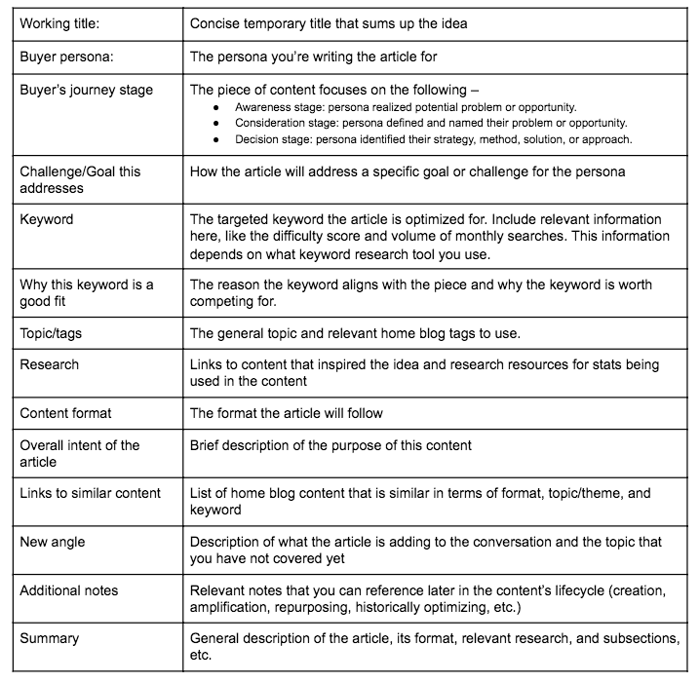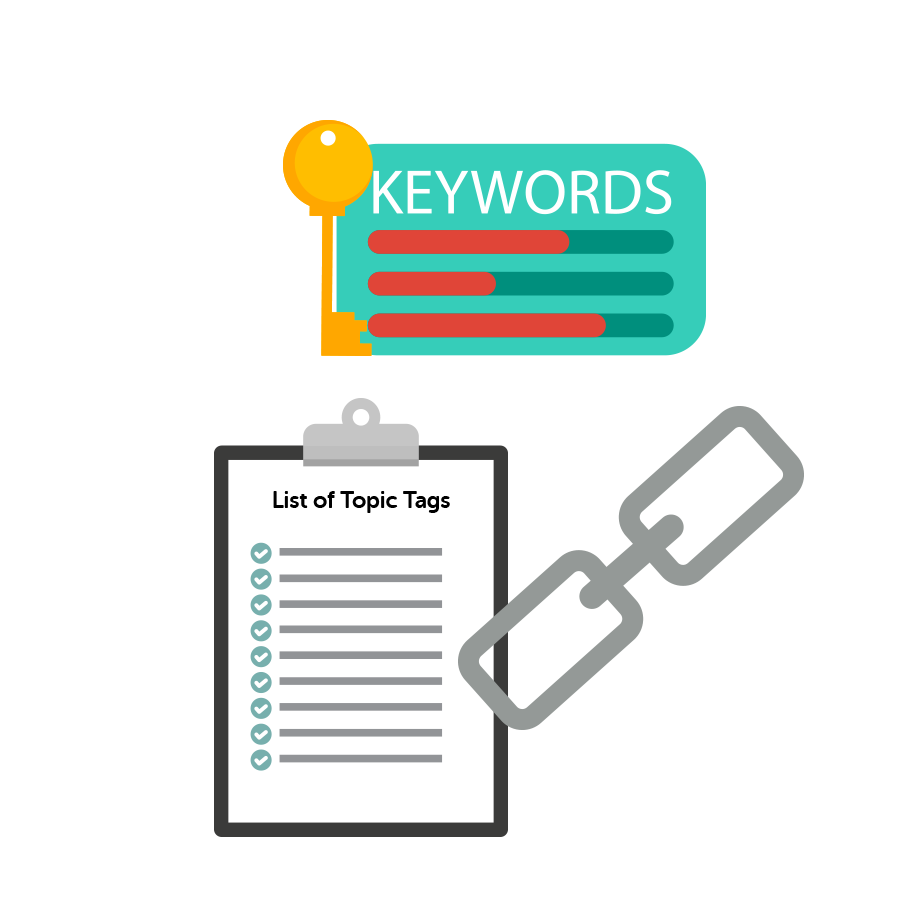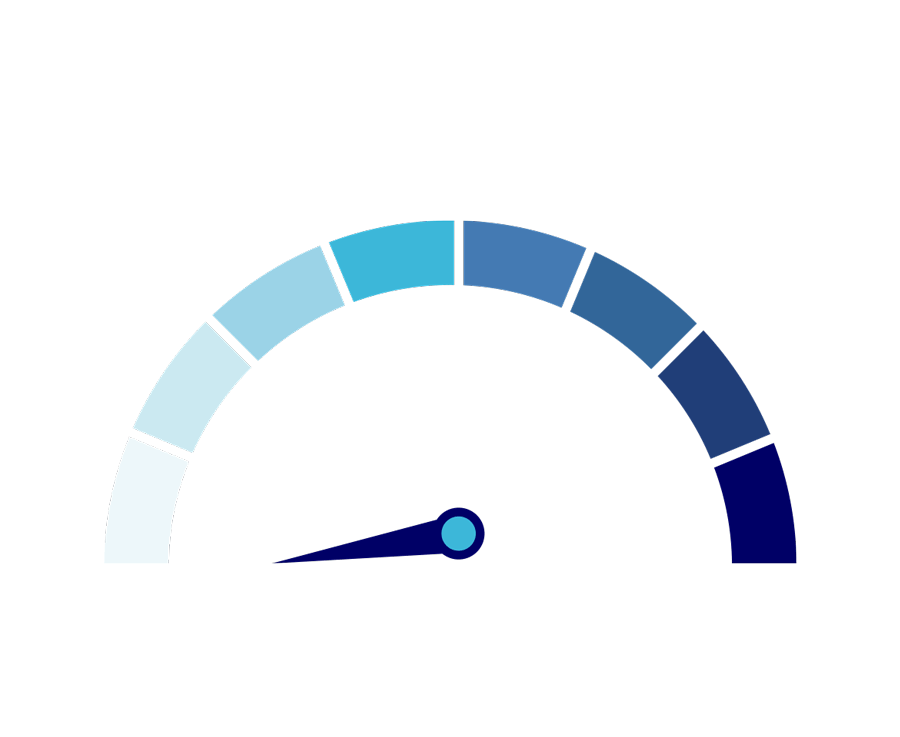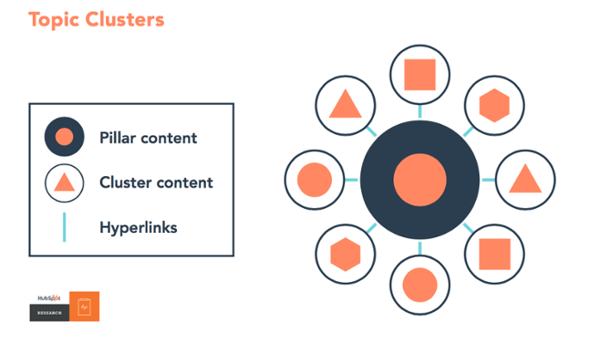How to Blog: A Comprehensive Plan for Driving Results With Content
Nearly two billion websites are
The idea of starting your blog can seem daunting and feel a little defeating. After all, there are already so many voices in the digital world.
Despite the volume of blog content existing on the web today, your blog is actually a must for businesses. Why?
Because, while you’re dragging your feet, your competitors already hit 2,000 visitors.
Blogging is a major focus area for content marketers. In fact, 79% of B2B marketers say their blog is a top format they use to distribute content. Plus, blog content creation is the second highest priority for companies (55%), slightly behind growing their SEO and organic presence (61%). And blogging directly influences the latter.
The reason is simple: blog content carries a lot of value.
Table of Contents
Get the Guide to Go
In a rush? No worries – take this guide home with you now!
This guide will teach you:
- The basics of effective copywriting that converts.
- Tips for ideation and developing a targeted strategy.
- How to build a collaborative internal content team.
- Best practices for promoting your content and measuring performance.

Download the How to Blog Guide

1Planning Your Business Blog
Before you get into planning, you need to fully understand why you're investing in blogging.
First of all, your business blog establishes your authority and demonstrates your credibility within your industry. By delivering relevant, informative content, you will impress your audience and stay top of mind.
Aside from these intangible metrics, you can see real, data back results that align with bigger organizational goals. These are the most important benefits:
A Blog Will Drive Traffic to Your Website.
Blog content yields more indexed pages on your site, which is added opportunities for visitors to find you. From an SEO standpoint, this helps your website rank higher the more pages you add.
In terms of social media, your blog content can be shared and expand your brand awareness.
The more traffic you earn to your website, the more opportunities you have to earn leads and prospects, which can eventually close.
Speaking of…
A Blog Will Drive Conversions.
Your blog content should educate visitors, but outside of being helpful, it should also lead visitors to download a content offer.
In an ideal world, you’ll provide relevant offers that provide more value for specific problems and pain points. Your call to action (CTA) will lead your visitors to a landing page that includes a form for them to submit their information in exchange for the downloadable offer.
This information is valuable to your business. You learn about your readers and capture information that allows your marketing and sales team to qualify leads and learn how to best deliver more value to continue educating them.
For example, you can build your email list by earning blog subscribers and deliver newsletters and relevant content to them.
Conversions lead to more opportunities to close deals and drive revenue goals for your organization.
A Blog Builds a Community Over Time.
Through consistent, ongoing blog content creation, you won’t just earn traffic and drive conversions – you’ll also earn loyal, eager fans who start following you.
An engaged, avid community of readers will show you what your audience is interested in and give you insights on what they need more information on.
A community is built thanks to your expanding body of blog content. As you build out your content assets, you can continually generate traffic through your new content and through compounding blog articles.
But building your business blog isn’t as easy as simply writing content just for the sake of creating content.
Creating and maintaining your business blog requires a lot of planning, organization, writing, measuring, promoting, and optimization.
Let’s get started.
Your planning stage needs to address three important aspects of your business blog.
-
Voice and Style – How do you want your brand to be conveyed?
-
Strategy –
Who are you trying to reach, what content will you provide, and how will you hit your objectives? -
Resources – How much time and how many people can you invest in building and maintaining your blog?
Voice and Style
Your brand’s voice is a vital component of your business blog. But your voice is not about what you say.
Your voice is about how you say it. And that can leave a big impression on your readers.
There is no right or wrong voice for you to use in your business blog. Rather, the primary focus should be authenticity.
To ensure you develop the best voice for your business blog, follow these steps.
1. Find the You You Are.
In Dr. Seuss’s 1959 book, Happy Birthday to You!, Dr. Seuss highlights the importance of being genuine to true to yourself:
“Today you are you, that is truer than true. There is no one alive who is you-er than you. Shout aloud, I am glad to be what I am. Thank goodness I'm not a ham, or a clam, or a dusty old jar of gooseberry jam. I am what I am, what a great thing to be. If I say so myself, happy
The best way to tap into finding your brand’s true identity is to dissect what makes your company stand out from the crowd. If you’re a cybersecurity company, you should be able to tell me what makes you different from “the other guys.”
This is a fun exercise for your team to reconnect with your brand. The best way to accomplish this is by brushing up on the following:
- Mission – What is your mission statement? How does it differ from your competitors’?
- Culture – Describe your company culture. What is the rapport like in the office between your employees?
- Value – Why are your products or services so important in your industry? How are they different from others?
Your answers need to be honest, accurate, and descriptive. This way, you have a good snapshot of your the brand identity you want to convey in your blog content.
2. Translate Your Identity to Style.
Don’t run away just yet, but at this stage, before diving into blogging, you need to create a company style guide.
Cringe.
I know this is daunting and sounds like a drag, but every aspect of your branding, like your logo and your design, require style guides.
Blogging is no different.
There are many benefits to creating a blog style guide:
-
Streamline your writing and optimization process.
-
Ensure consistency in all blog content.
-
Maintain quality standards for each article.
-
Simplify training for new contributors as you scale your blogging team.
Your blog style guide needs to address colors, images, font information, language and tone, and grammar.
Here’s a quick step-by-step guide to creating your blog style guide:
1. Establish Your Buyer Personas to Understand Your Target Audience.
Your blog is built for a specific kind of reader. So keep your buyer personas in mind as you start establishing your style. We will cover how to build buyer personas in the next section.
2. Keep Your Company Identity in Mind Before You Start Writing Your Style Guide.
3. Start With Formatting for Your Blog Content.
4. Write Content Style to Cover Everything.
-
Spelling – American English, British English, etc.
-
Punctuation – Use of the Oxford comma, dashes
and hyphens, semicolons, etc. -
Numbers – How to use numerals to identify numbers in your copy.
-
Acronyms and abbreviations – How to effectively communicate with industry-specific acronyms and abbreviations.
5. Address the Finishing Touches of Your Blog Content.
You will likely need to add sections to your style guide to address elements of blogging outside of copywriting and formatting. This includes:
-
Sourcing and citing other articles, research, and images.
-
Categorizing and tagging each article.
-
Hyperlinking best practices, for both internal and external linking.
-
Writing meta descriptions.
-
Including author information in the bio section.
-
Handling social linking and other social elements.
When you have your blog style guide ready, you can educate your team and potential guest contributors.
But keep in mind, your style guide isn’t set in stone. It will evolve over time as you find what works and what doesn’t.
Strategy
You need a map to navigate a road trip. The same goes for executing marketing efforts. Without a strategy, you don’t have an idea of what success is and you don’t know how to drive real results that contribute to big-picture, organizational goals.
Here are the components you need to focus on when you’re building your blogging strategy:
Buyer Personas
A buyer persona is a semi-fictional representation of your ideal customer. When you’re building your personas, you should use market research and real data from current customers.
There are many ways to flesh out your buyer persona. You can research current customers and ask for their feedback on how satisfied they are with your products or services. Also, reach out to referrals and prospects, as well as your sales team to get a better understanding of ongoing concerns from your ideal customer.
Ask insightful questions about their company, role, goals, challenges, where they get information, and shopping preferences.
One of the best free tools you can use is the Make My Persona tool from HubSpot. It walks you through every step of the process and gives you a cool PDF to download for reference.
Keyword Research
When you have buyer personas on hand, you can then start conducting keyword research. Keyword research is an essential part of your SEO strategy, which helps your content rank higher and generates more traffic.
Here’s a quick overview of how to conduct keyword research:
-
Build a list of topics relevant to your buyer personas’ challenges and goals. These should be broad, general topic buckets.
-
Start identifying keywords and phrases you want to rank for in search engine results pages (SERPs). This should be a brain dump of phrases your ideal customers will be searching on Google.
-
Find a keyword research tool and start researching each term. Look at the search volume and other important information, like priority scores and cost-per-click (CPC).
NOTE: Mix your keywords with head teams (shorter, generic keyword phrases) and long tail keywords (three or more words that are more specific).
- Use another online tool to conduct competitor analysis. You can find what keywords your competitors are ranking for and find opportunities you want to compete for.
But this is just one aspect of your SEO and blogging strategy. You want to integrate topic clusters.
Topic Clustering
Building your topic clusters consists of planning out what broad topics you want to address and mapping out content related to the clusters.
A topic cluster acts as a collection of articles and webpages interlinked around one main topic. It consists of pillar pages, cluster content, and hyperlinks between them.
Pillar Pages
A pillar page is the center of your topic cluster. It is a long-form piece of content that covers a broad topic comprehensively.
The pillar page then links out to shorter form content covering subtopics that share a semantic relationship with the main topic in the pillar page. These shorter pieces of content related to the pillar page are also referred to as cluster content.
Cluster Content
Your cluster content is more specific and in-depth on the subtopics. For example, if your pillar page is on cybersecurity, your cluster content can cover things like the latest notable cybersecurity hacks, a curated list of cybersecurity reports, and tips on teaming with cybersecurity professionals.
As you build out your topic cluster, don’t forget the most important aspect…
Hyperlinks
To make the most out of your topic clustering, you need to link your pillar page to cluster content and vice versa. Hyperlinking them together tells Google the content is related and builds link equity, which can improve your SEO efforts.
HubSpot’s Content Strategy tool makes this entire process a piece of cake.
Resources
Another important thing to consider when planning your business blog is what you can afford to invest. You need to know who in your company is going to be playing a part in building and maintaining your blog and in what capacity.
Make a list of who will be contributing content, writing, editing, designing, and measuring the performance of your blog.
Layout a schedule and process that indicates when each person’s role comes into play.
Once you have your planning out of the way, it’s time to get started.

2Getting Started - Ideating and Organizing
You’ve got your team assembled, an established style guide, and plenty of research to direct you, so you’re ready to start hashing out some detailed blog content ideas.
Welcome to…
The Ideation Stage
When it comes to generating new blog ideas, you need a repeatable, scalable process. One of the best ways to spark creativity and develop insightful, unique ideas is by using a blog content worksheet.
You want a worksheet that encourages your team to think through every aspect of your content. Your team can look at every angle to ensure they’re developing informative, engaging content.
Here’s a look at each step of the ideation phase that you should include in your blog content worksheet:

As you build your content ideas, add them to …
Your Editorial Calendar
With an editorial calendar, you gain an overview of the big picture to see what articles have been published, which ones are in the works, and which are coming up in the future.
Fill out each column as you complete your home blog content worksheet. Organize your document storage in a way that makes sense to you and your team.
For example, add folders in Google Drive named MONTH YEAR to organize your home blog worksheets as you create them. This way, you can link the Google Doc within the editorial calendar.
An added tip: Try to come up with interesting blog content. Every so often, research ways to "reinvent the wheel" and create a new spin on a classic topic. The more engaging your content, the more interest it can generate.

3Copywriting 101
As you create worksheets with content ideas explained in them, you (and your team) can get to the most important part – writing.
You don’t have to be the next Hemingway to write your business blog content. But you should hold a high standard of quality for yourself and your team of writers.
Here’s a quick overview of copywriting tips for business blogging:
Start With a Detailed Outline
With a detailed outline in place, you can breeze through your first draft quickly.
Your outline should include a framework, showing the major ideas for each section and what points you want to touch on. Also, make sure to add relevant data and statistics that add depth to each section when applicable.
Here’s a good format to follow for a list article:
Introduction
-
Highlight the main point you are making in the introduction.
-
Add stats here that you want to include in this section.
Summary: Write a few sentences to sum up what the introduction will touch on. Keep your summary concise but detailed enough so you or another writer looking at the outline will fully understand the message being conveyed in the introduction.
Section 1
-
Highlight the main point of this first listed section. As with the introduction, include stats you want to include here too.
Summary: These sentences should paint the picture you want to make in this first section. After writing this, ask yourself, “Do I know what points I want to make? Will someone else
Repeat the same format for each section and the conclusion of your article.
Accept Bad First Drafts
Face it. You’re not going to write perfect prose right off the bat.
Just start writing. Get your main ideas down and make them flow as you follow your outline. You will have time when you revise and edit to make your content the best quality it can be.
If you still find yourself stuck, start writing the section that most inspires you. That could be the conclusion, the introduction, or the third point in your listicle.
Still spinning your wheels? Try these writing exercises in a blank document to get your momentum going:
-
Write down lines from your favorite author or book.
-
Use writing prompts, like starting with the following lines:
-
I can see…
-
I remember when...
-
I just learned that…
-
My best day was…
-
My biggest mistake I made was…
-
_____ was my favorite teacher because…
-
The last goal I achieved was…
-
On my previous birthday, I enjoyed…
-
Review the last movie you saw.
Once you start getting words down, your flow will begin. Start riding that momentum and your first draft will be done in no time.
Cut the Fluff and Keep the Substance
This is one of the hardest parts of writing – cutting the fat from your copy.
Keep your content concise and to the point. If you’re keeping fluff, you will lose readers. They don’t want to slog through huge blocks of text to find the information they need.
The best way to accomplish this is by asking the following questions as you slowly read through your first draft:
-
Are there any redundancies in this section or throughout the whole piece?
-
Can I remove certain phrases or words (like excessive adjectives and adverbs) without changing the meaning of the sentence?
-
Is this language overly flowery or filled with jargon that could lose readers?
-
Do my readers (e.g., buyer personas) already know this information?
Variety is the Spice of Blogging
Diversify sentence length and structure. Flow matters for readability. Keep your readers engaged and interested by varying how sentences build on each other.
This is called sentence variety in terms of composition. It is the practice of varying both structure and length of sentences to accomplish two goals:
-
Create emphasis on the points that are most appropriate to emphasize.
-
Prevent monotony.
While there are plenty of awesome grammar checking tools available online, there is no better way to improve sentence variety than by listening with the human ear.
Read your content out loud to yourself (or ask your editor to do this), and make notes on where you need to add variety. Here are other strategies you can try to ensure sentence variety:
-
Print out your blog content and read it from a physical copy.
-
Change the font in your document.
-
Try the three column approach, where you separate a piece of paper into these three columns:
-
Column 1 – list the opening words in each of your sentences, and look for where you can vary these beginnings.
-
Column 2 – write out the number of words in each sentence, and identify where you can change sentence lengths.
-
Column 3 – describe the kinds of sentences you used, and edit sentences as needed.
Metaphors Are Invaluable
Some of the most powerful figures of speech are metaphors and similes. For a quick refresher from your high school English class, let’s define what these are.
A metaphor describes an object or action in a way that helps explain an idea or draw comparisons. They are not literally true.
These add color and depth to your prose and can deliver important symbolic meanings or vital comparisons.
A simile, on the other hand, is used to compare two things sharing something in common. The easiest way to spot a simile is to look for the words “like” and “as.”
When you use these figures of speech tactfully, you help paint a picture for your readers. By providing detailed metaphors, you can appeal to your readers’ senses and help them fully experience the content you’re creating.
To get started with learning how to write metaphors, review some of the most common ones so you can see the formula. The basic formula for metaphorical thinking is “A is B.”
Common metaphorical expressions follow this. For example, we have all heard, “time is money.” This format is a good place to start, but don’t get lazy with your metaphors.
You want to make vivid comparisons that your target audience will understand. Avoid using cliches and overused imagery. Instead, make it personal by bringing your own interests and experiences to your writing.
For example, if you love cooking and you’re writing a blog article on cybersecurity, you can build an entire theme around a metaphor – finding the right ingredients to use in your recipe for keeping your website secure.
This metaphor is relatable to readers because everyone is familiar with cooking concepts. Plus, it makes what could be a complex topic (cybersecurity) more accessible to readers.
Write Strong Introductions
Your introduction is your first impression to the reader. If you don’t pull them in right away, you’re going to lose them.
The best way to write strong, engaging introductions is by following the
Hook
This is when you effectively grab attention. It should be the first line of your blog article. An awesome hook is concise, interesting, and specific to the content.
Transition
After the hook, you need to make a graceful handoff to the
Thesis
This is where your thesis statement shines. Your thesis statement is a concise summary of the main idea or
It emphasizes why the reader should continue reading. You want to provide enough detail on how the content will positively impact the reader and what problem or challenge you’re addressing in the article.
When it comes to writing, as with any skill, the more you do it, the better you become. Writing is an art form that, when practiced enough, can make you an excellent communicator. It helps you express your message with clarity and connect with your audience in a meaningful way.

4Building Your Blogging Team
Now that you have all your pieces together, you can streamline your blogging process so you put out a high volume of awesome content.
Focus on the people on your blogging team and how their responsibilities will be the foundation of your blogging process.
Assembling Your Team
Every blogging team might look different for each organization. If you’re creating just a few articles each week, you might only need a writer and strategist.
But if you’re delivering several articles every day, you will likely need a full team to oversee your content marketing efforts.
Here’s a look at who potentially will make up your content marketing team to work on your business blog:
Content Strategist
The content strategist conducts research, develops editorial calendars, and serves as a project manager to ensure deadlines are hit by each team member.
Writer/Editor
The writer/editor on your team loves writing about your industry, provides comments and notes on content ideas suggested by the content strategist, and edits all blog content before it publishes.
Note: Ideally, you will have a team of writers so they can edit one another’s work. Avoid self-editing – writers who edit their own content are too close to it to spot errors. Your content strategist can also act as an editor.
Designer
The designer creates and approves visual elements included in your content and oversees the design of the entire
Analyst
The analyst measures the performance of your blog content, conducts market research and gathers intelligence from competitors, and relates how blog content goals are impacting the big picture business goals.
Community Manager
The community manager promotes and distributes your blog content through PR, SEO, and
Videographer
The videographer manages the video content creation process, records and edits video content, and collaborates with strategists and analysts to optimize video content campaigns. If you’re using video in your business blog, this role is a must.
Building a Learning Culture
Content marketing is forever changing as new trends and technologies come and go and as consumer behavior evolves. This is why continuous education is so important for your entire blogging team.
Invest in helping them stay in the know on blogging best practices. Here’s a list of awesome online training to provide for every team member:
-
Google Analytics Academy: Beginners, Advanced, etc.
-
Quinty Social Media Analytics course
-
HubSpot Academy certifications:
-
Inbound Marketing
-
Content Marketing
-
Email Marketing
-
Udemy:
-
Copywriting Blunders: Do You Make These 10 Common Mistakes? course
-
Content Marketing for B2B Enterprises course
-
QuickSprout University Content Marketing courses
-
WordStream PPC University
Build a content marketing learning center spreadsheet to act as a database for tracking all the best online learning materials relevant to everyone on your content marketing team.

5Optimizing Your Blog Articles
Optimizing your blog content will earn you higher rankings and more organic traffic. It is an essential component of your business blogging process.
Here are some best practices for ensuring your blog content is fully optimized:
Keyword Placement
Getting rewarded for stuffing keywords is over. Now, you want to use your keywords naturally and without the sole intent of ranking. Merely repeating the keyword in your body content will not help you anymore.
You should always look for opportunities to naturally use your keywords throughout the body and also within your headers. But don’t overdo it or you risk being penalized for stuffing.
There’s a simple rule of thumb to follow when it comes to keyword use in the headers and the body – reader first. Ensure the keyword makes the content easier to comprehend and consume. If it’s unnatural, it will hurt the overall reader experience.
Here are other essential places you need to include your target keywords:
-
Title tag – headline of your blog article that searchers see first on the SERPs.
-
URL – this tells both search engines and readers what the webpage is about.
-
Meta description – keyword use here tells Google and searches what your content is about.
Images
Search engines can’t see images, but they do read
Alt text is an attribute you can add to an image tag in HTML. This is where you can include relevant keywords.
For example, when we insert images to a blog article in HubSpot, we name the image file so it’s clear what the image is, which is especially helpful if you can naturally include the keyword in each image file name. Then, in the edit modules for the featured image alt text, we naturally use the target keyword as we describe the featured image.
Linking
Internal linking creates link equity, which improves ranking results. As you create more content on your home blog, you will have more internal content to link to.
Aside from the SEO impact, Internal linking also helps your readers find more relevant content associated with the anchor text of your link.
Mobile Optimization
In 2018, not having a mobile friendly site is no longer an option. Your competitors are bound to outperform you if you lose your mobile visitors due to poor mobile UX.
Mobile friendly options are ranked first because search engines favor mobile-friendly websites. Work with your internal team to ensure you use
Responsive design websites allow blog pages to have just one URL so you’re not using two (one for mobile, one for desktop). This way, links to your content won’t be separated into two different URLs.
Tagging and Categorizing Your Content
As you’re building your content assets in your business blog, you will need some sort of structure.
This is where tags and categories can best serve you.
Blog Tags
Each blog tag you create means you create a new site page where the content from the tags will be shown. So if you’re using too many similar tags, search engines might view the content several times, which can lead to penalties for duplicate content.
The best practice is to plan ahead with your blogging strategy. Select somewhere between 15 and 30 blog tags that are important and relevant to your blog. Then, just stick to only using those tags. This way, you don’t create too many similar tags and accidentally deliver duplicate content.
Why They Matter
Tags and categories are great for organizing your content. Not only does this help visitors find related content, but it also helps search engines understand how content is semantically related.
Here’s what makes them different:
A category is keyword focused and general by nature. They act as broad groupings of article topics. Each article falls under at least one category.
Tags are meant to group content that apply to multiple categories. Each article usually has a few tags associated with it.
SEO Best Practices for Categories and Tags
Popular content management systems (CMSs) like WordPress give you the option of creating categories and tags.
In terms of categories and tags, here are some best practices to make the most of your SEO efforts:
-
Include keywords in your categories and tags.
-
Keep categories to a minimum – a good rule of thumb is between five and 10 categories (though this may vary depending on your content strategy).
-
Don’t use singular and plural versions of the same category and tag.
-
Ensure you’re not duplicating categories and tags.
-
For every tag page, use a ‘
noindex ’ and ‘nofollow.’ This way, search engines don’t account for these pages while indexing your website.

6Driving Conversions
An effective business blog accomplishes many marketing goals. It’s great for establishing authority and credibility, building brand awareness, and attracting traffic to your site.
But ultimately, your blog needs to fuel your large-scale business goals. Your marketing efforts should be generating leads that can be qualified and passed on to sales.
This is where conversion paths come in handy.
Why You Need Conversion Paths
Your conversion paths are processes you establish for website visitors to follow so they convert into an identifiable lead. Here’s the basic rundown of how a conversion path works:
-
A visitor is reading your blog article and sees a valuable content offer they’re interested in, like an ebook, located in a call to action (CTA).
-
They click the CTA and go to a landing page, where they can read more information about what the offer covers.
-
On the landing page, they provide their information on a form so they can access the gated content offer.
-
The visitor becomes a lead as you gather their information, and they’re sent to a thank you page where they receive the content offer.
Bottom line: Conversion paths are what make your business blog valuable to your bigger picture goals. The more you build your blog and create new content, the more opportunities you have to create conversion paths for your audience.
Conversion Path Best Practices
Ensure Content Offers Are Contextual.
Strive to provide a content offer that speaks to the persona and the stage of the buyer’s journey they’re in for your blog articles. If the offer is tailored to their needs at their specific stage, readers are more likely to convert.
Optimize CTAs to Grab Attention.
Refine your language and messaging for your CTA button so readers know what the offer is by aligning the messaging with the landing page copy. Also, use action-oriented language to encourage readers to take action and click the button.
Present Benefits of the Content Offer in a Concise Way on Your Landing Page.
Just because they clicked the CTA doesn’t guarantee a conversion.
With good landing page content that highlights what the reader will enjoy the most from the content offer, they will clearly understand the value of the offer. The content should be engaging and get them excited to fill out the form and convert.

7Promoting Your Blog Content
As your team puts in all the time and effort building out your blog content, you want readers to find it. Promoting your blog can’t be just an afterthought.
There are several elements of your promotional strategy to focus on:
Consider Paid Promotions
There are several paid opportunities you can pursue, including:
Retargeting
This is a subset of remarketing, which is the process of marketing to the same prospect more than once. The concept of retargeting is used to describe the idea of delivering ad placements and display ads to users based on their activity on your site.
Search Engine Ads
Search engines like Google and Bing provide targeted
Social Media Ads
Use paid ads on popular social media platforms like Facebook to gain valuable readers and expand your reach in a targeted strategy.
Build Relationships
As your team adds blog content, you should also focus on building relationships with fellow industry thought leaders.
Then, practice reciprocity. Share their content, and they will likely share yours too. This ongoing networking and engagement through social media will drive your blog shares and expand your overall reach.
The most important aspect of your social media promotional strategy is building authentic, human connections with people you respect and trust. This yields big results for both you and your network.
Make Your Subscribers Feel Special
Growing your amount of blog subscribers is another great way to keep your readers coming back for more. Make it easy for visitors to subscribe to your blog, then send them consistent updates to encourage them to read your most recent blog articles.
Email newsletters are great for this. Also, consider offering exclusive content to them so they feel extra special and are excited to open every blog subscription email you send them.
Collaborate with Influencers and Promoters
Promoters are people you link to in your blog content who carry a lot of authority and are actively engaged on social media. They’re the ones most likely to share and comment on your latest and great blog posts.
Influencers, similar to promoters, are also active in your target social media areas. They typically have a large following and can give your blog a huge boost if they decide to share your content.
Gain Personal Exposure
Your team of experts who contribute to your blog should be building their personal brand. For example, outside your business blog, they can also contribute as a guest blogger in other publications where your audience is reading and engaging.
You can not only earn links back to your business blog, but you can also gain brand awareness, which ultimately drives readership.
No matter how you promote your blog, measuring your outreach efforts is a must. Tracking results from all your promotional methods

8Measuring Your Blog Performance
As you know with anything in marketing, you need to track your efforts. Defining the success of your blog content guides you and your team in the right direction.
When you know what is successful and what is falling short, you can evolve your entire business blogging strategy over time.
Metrics That Matter
It can be overwhelming when you first start reviewing your blog content data. Tools like Google Analytics or your CMS analytics dashboard are very intimidating. There are so many charts, graphs, and data points.
The best first step you can do is take a deep breath. Don’t worry. Not every metric is super important to measuring your blog content performance.
The metrics you want to track align with three different aspects of blog performance:
Traffic
Without traffic, your blog isn’t being enjoyed and you can’t hit the real results you need for your business. But there are metrics that fall under the traffic umbrella you need to track, including:
Pageviews
Google defines a pageview as the instance a page is being loaded or reloaded in a browser.
This is a good indicator of how popular certain blog articles can be, but it’s not the only traffic metric worth looking at.
Traffic Channels
These metrics show you exactly where readers are coming from. Within Google Analytics, you can see how many sessions and users come from channels, such as:
-
Organic search
-
Social
-
Email
-
Direct
-
Referral
Returning Visitors
You want your blog content to do more than just bring in new visitors. You want those readers to return.
The amount of returning visitors answers an important question your team needs to answer: Is our content delivering enough value to bring our readers back for more?
Pages Per Visit
This metric shows how many pages a user or group of users views on your website, and it’s often displayed as an average.
If your readers are seeing multiple pages in one visit, that means your internal linking strategy is effective. It encourages them to keep diving deeper into your blog for more help.
Engagement
It’s great to see traffic coming into your blog, but how are audiences actually consuming and interacting with your blog content? There are a few metrics that can help paint the picture:
Social Media Shares
These are by no means an end all, be all metric for engagement, but it is a good indication of whether or not readers trust and respect you as an industry authority. The more readers share your blog content, the more authority and trust you earn with a bigger audience.
If your shares are high, consider displaying share counts to create social proof for your brand.
Backlinks
Also known as inbound links, these act as votes of confidence. Measure how many links you earn from outside resources, but keep authority in mind. The higher the authority is for the website linking to you, the more valuable those links are for your link profile.
Comments
If you have a comments section in your blog, stay engaged in it with your readers! If people talk and discuss your content underneath your blog articles, it shows they’re moved by your insights and want to recognize your contribution.
Lead Generation
One of the most important purposes of your business blog is to generate leads to eventually send to sales, who can then turn these leads into prospects and customers.
Here are a couple of lead generation metrics you should monitor:
Subscribers
Ideally, if you’re earning targeted traffic on your site and your readers are finding value, they will subscribe to your blog. This metric is your number of subscribers.
If your subscribers aren’t growing over time, look for opportunities to turn this around, like promoting awesome email newsletters or providing incentives for email subscribers.
Conversion Rates
This metric shows how many visitors ultimately convert and become email subscribers. A high conversion rate tells you that your content is relevant and that your content offer (lead magnet) is exciting to readers on particular blog articles that convert a lot of visitors.
Build a process with your team so your best analytical thinkers are consistently measuring and reporting on this data.

9Maximizing Your Blog’s Mileage
Your blog content is never a set-it-and-forget-it situation. Once you figure out the best time to publish your blog, you can make the most of the content’s mileage down the road with a few techniques.
Historical Optimization
The act of historically optimizing is an exciting tactic that can yield big traffic results. It’s the process of optimizing your outdated blog content to generate more traffic and conversions.
Why Historical Optimization is Important
It’s common for business blogs to generate the majority of their views from articles published in the past. Those higher performing articles also often produce the most leads.
As you update these top-performing older articles, you are (hopefully) accomplishing two key goals:
-
You’re increasing traffic to these articles.
-
You’re improving conversion rates for them.
This is achieved by adding even more value to these already awesome blog articles. When you’re updating them, you want to make accuracy and comprehensiveness a top priority.
For example, add more entries to a list article or include more recent examples in an article that showcases real use cases for a particular subject.
This fresh update is rewarded by searchers and search engines alike, so you can expect an improvement in your SEO results for these articles. Plus, as more readers enjoy the added value, you can earn more links and social shares.
How to Historically Optimize Blog Articles
-
Make a list of articles worth updating. These have the potential to rank higher for keywords and are old enough to make updating a necessity.
-
Add improvements to each article that are noticeable. Remember, you’re trying to add even more value to these articles for your audience, so look for ways to make the content more comprehensive and accurate.
-
Optimize the article for conversions and search engine rankings. This means using the target keyword naturally within the content as you rewrite and add to it. Incorporate those keywords in your CTA as well, and ensure you’re providing a relevant content offer in the article that aligns with the persona and the reader’s buyer’s journey stage.
Repurposing Content
Your existing blog content can be recycled, which delivers plenty of advantages, including the following:
-
Celebrate some of your best work – That awesome blog article you just wrote six months ago can stay front and center with your audiences and continue to deliver value.
-
Reach new audiences – By using tactics like reformatting, you can expand your audience reach.
-
Get the most out of your blog content – You and your team spend a lot of time and energy on each article, so why not get the most mileage out of it?
This all comes down to a simple saying proposed by Salma Jafri in her Search Engine Watch article:
Create less, promote more.
This doesn’t mean simply spamming your social media followers by sharing blog articles dozens of times each day. It means getting your content on different channels in different formats.
How to Pick Content Worth Repurposing
Similar to prioritizing your historical optimization articles, you want to find content that is popular and that you can build on. Also, start looking at your most popular blog content to see how to expand its reach.
Ideas For Repurposing Your Blog Content
You can turn your awesome articles into plenty of different formats and they can be distributed through different channels. Here are a few ideas worth considering:
-
Turn an article that lists a lot of research into an engaging, visually appealing infographic.
-
Break your listicles into a blog series, where you go more in depth into each individual listing.
-
Repost portions of your blog articles on Quora to join in on relevant conversations where you can deliver value.
-
Read blog articles and record them in audio format, then release it as a podcast.
-
Host a webinar that builds on existing blog content.
-
Break your blog content, either a long-form article or series of articles, into bite-sized chunks and develop an email series or ecourse related to those content topics.
-
Transform blog articles into slide presentations, like a SlideShare that can be shared via social media.
-
Create graphics with quick tips and snippets from your blog content that you can distribute through social media.
-
For instructional blog articles, record a video, like a screencast, that walks viewers through how to complete a task that aligns with your existing blog article.
-
Turn blog articles into course materials and design an online course through a massive open online course (MOOC).

10Preparing to Scale Your Blog
At this point, your business blog is ready to launch. The last piece of the puzzle involves getting your whole team on board and preparing to scale your business blog operation.
Getting Buy-In From Your Whole Team
The best way to get buy-in from your team, from leadership to lower level team members, is by creating internal documents that lay out every aspect of the business blog.
Collaborate with your team and write detailed process documents. These documents should cover everything discussed in this guide, from content ideation and copywriting tips to conversion rate optimization and blog performance measurement.
Once you have your process documents completed, present them to leadership to confirm they’re on the same page as you. Feedback is always valuable at this stage.
Having an open discussion about your processes will bring vulnerabilities and miscommunications to light. Plus, leadership could provide a different perspective on certain elements that might improve your processes.
After you and your blogging team confirm processes with leadership, it’s time to share it with the whole company. If you have the ability, schedule a company-wide meeting where you and your team can conduct a full presentation on why you’re building the brand’s blog, how you will be accomplishing this, and what the rest of the company can do to help.
Sticking to Processes
The important thing to remember about processes is that they need to be adhered to by everyone involved. Taking shortcuts and skipping steps can cause problems in the long term.
For example, if your community manager isn’t sticking to the style guide, your social media content promoting your blog will not be consistent with the tone and language of the actual blog. This can make you look less credible to your audience.
That being said, processes are never written stone. Expect them to evolve as your team gets bigger and as you measure and adjust your business blogging strategy.
Plan on revisiting your processes a few times each year to discuss potential updates to processes. But make sure everyone is on the same page and agrees with the changes. Otherwise, your whole team won’t be rowing in the same direction, which can drastically hurt your ability to build an effective business blog and halt your scaling efforts.
Bottom Line
You want a well-oiled machine of creative thinkers and problem solvers who are passionate about your brand’s blog. With the right processes in place and with defined, established roles and responsibilities for everyone involved, your blog is ready for sustainable success.
A sustainable, growing business blog is one of your best tools in business. In time, your entire company will see big picture results influenced by all the hard work and resources you’re putting into your blog.
Your audience is waiting for you.
